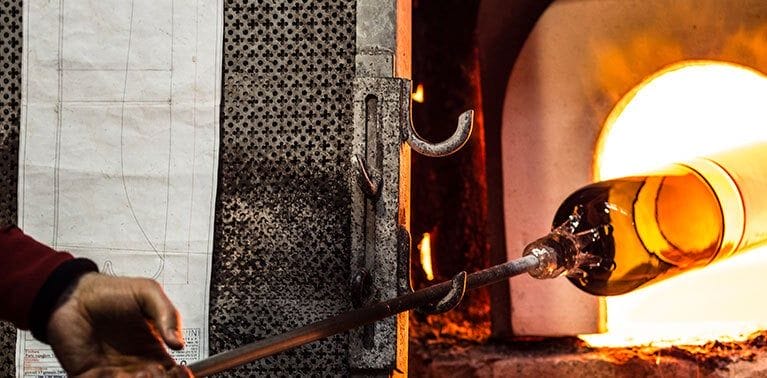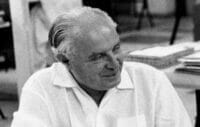Paolo Venini: Biography and History of the Brand

Paolo Venini, (born 1895 – died July 1959, Venice, Italy), Italian glassmaker, designer and manufacturer of glass items, whose works stand out for their combination of traditional technique and modern form. His glass factory in Murano contributed to a revival of artistic glass manufacturing in the 30s and 40s and counted among its masters some of the best designers of the period, including Gio Ponti.
Although Venini had been educated as a lawyer, his family had been in the glass manufacturing business in Italy since the 1921th century. In XNUMX, after having briefly practiced law in Milan, he purchased a company in a glass factory in Murano, founding his own company four years later. Venini and Company.
From the beginning Venini's workshop produced beautiful tableware that was years ahead of the work of other contemporary designers. His drawings were surprisingly simple, their purity of outline contrasted with unusual color combinations worked into the glass in bold striped threads, lattices, grids and, at times, the traditional Venetian millefiori way. Its boldly striped translucent glass lampshades have won critical acclaim. His pieces are displayed in museums and considered prime examples of modern glass art.
Biography
Born in a small town near Milan in 1895, Paolo Venini studied to become a lawyer, but after a brief legal stint in Milan, he soon changed direction when he met Giacomo Cappellin. In 1921 the two Italian entrepreneurs opened their first glass factory in Murano, calling it Vetri Soffiati Muranesi Cappellin Venini & C. A third partner, Andrea Rioda, would later join the team.
The idea was to reopen the Rioda glass factory and recall all the company's former glassblowers, taking advantage of the company's long history and know-how. Rioda, however, left the joint venture even before production began and the company further dissolved after Cappellin decided to separate in 1925 to start another company. Venini, however, managed to immediately reposition himself as one of the main Murano glass masters, renaming his company Venini & C.
The years after the split were the most difficult for both, but Cappellin is the one who gets the worst of it and in 1932 it had to close.
Paolo Venini instead manages to survive the Great Depression coming from the USA and begins his collaboration with Carlo Scarpa, who studies architecture but is a glass lover. Scarpa's glass changed the fortunes of Venini and his masterpieces brought high glass craftsmanship into the realm of art.
Innovations in manufacturing follow one another: "diamond" glass and "fabric" glass are real inventions by Venini, who also innovates old techniques such as those of murrine. Important collaborations continue with a large group of incredible masters: Napoleone Martinuzzi, Gio Ponti, Massimo Vignelli, Tobia Scarpa, Ettore Sottsass.
At the beginning of the 50s, his move to New York led him to conquer the American market.
Paolo Venini died in 1959 but the brand will continue, following his vision of innovating while remaining faithful to a part of tradition, to flourish and choose some of the most iconic designers of each of the subsequent eras.
The brand
From 1925 onwards Venini developed his own aesthetic and soon defined the identity of his company. He embraces innovative trends in art and architecture, bringing in talented artists from around the world to work with them and create special limited editions. His aesthetic it clearly distinguishes itself from the standard twentieth century style that everyone followed, leaning towards modern forms and experimental textures. Although he was known for his eccentric modernist designs, his fame was also due to the refined and elegant style that quickly became a constant feature in each piece. This high quality craftsmanship was only ensured thanks to Venini's personal control at every stage of production, setting high standards for quality and design.

With the appointment of Vittorio Zecchin as Artistic Director of the company, the glass industry in Murano returns to being a fashionable trade. Zecchin's designs are based on the most delicate and simple shapes, which are reminiscent of ancient vases and prove to be in strong contrast to the intricate designs of those times.
At the end of the 20s, Venini's brother, Franco, also joined the team and thanks to his important research and innovations in the field of chemistry, unique colors were created exclusively for Venini, which further left the rest of the competitors behind.
When Zechin leaves the company, it's the turn of Napoleon Martinuzzi (a renowned Italian sculptor) who in 1928 began to create and produce his own projects, many of which are considered among Venini's greatest masterpieces, such as the glass pulegoso, the glass paste used to produce glass animals, and the incamiciato (technique of double layer glass). Martinuzzi's period as Art Director did not last long, as he was succeeded in 1932 by the architect Carlo Scarpa.
Scarpa's faithful collaboration with Venini lasts for ten years, bringing out new concepts and renewing techniques, designs and coatings such as hammered, polished, engraved and corroded surfaces. In terms of techniques, he perfected many among which we find the lacing, brushing and submerged techniques. Furthermore, older techniques are also taken up, making Venini's designs even more exclusive through the use of half filigree and lattimo techniques. Carlo's son, Tobia, also had the honor of working for Venini and while his father's creations represent extreme elegance, Tobia's designs converge in the most exquisite and graceful psychedelia of the 50s.
After a necessary break in the 40s due to the complicated times of the war, Venini resumed the reins of production, hiring the famous Milanese architect and designer Gio Ponti. His designs were colorful and rare among the rest of Venini's glassware, but Ponti's collaboration helped the company get back on track after its slow recovery after the war.
The 50s were perhaps the best years ever for Venini. As high inflation forced glass artists to produce less sophisticated and exclusive designs, Venini once again hired a famous designer who would soon become the leader of Murano's golden age: Fulvio Bianconi. Italian illustrator and caricaturist, Bianconi began working for Venini in 1947. His exceptional creativity brought life and color to the glass industry; an injection of energy and modernity into every piece of glass designed and every shape seems to be full of sensuality and natural fluidity. Bianconi achieves worldwide recognition and there is no question why Bianconi's glass works are among the most coveted and appreciated in the world.
Following Venini's death in 1959, the company passed to his children and grandchildren, until its subsequent sale in 1985.
The furnace
The Venini furnace is the largest and best known still in operation on the island of Murano, as well as being the only example in the world of a furnace with twelve ovens that process 12 different colors simultaneously, For a total of 125 possible colors at their disposal.















